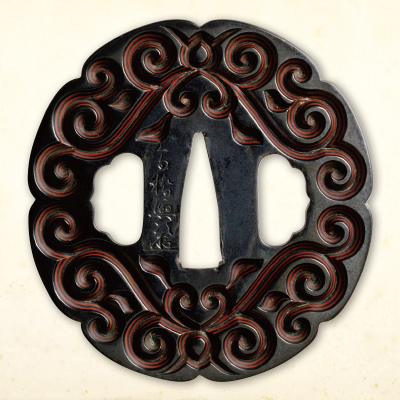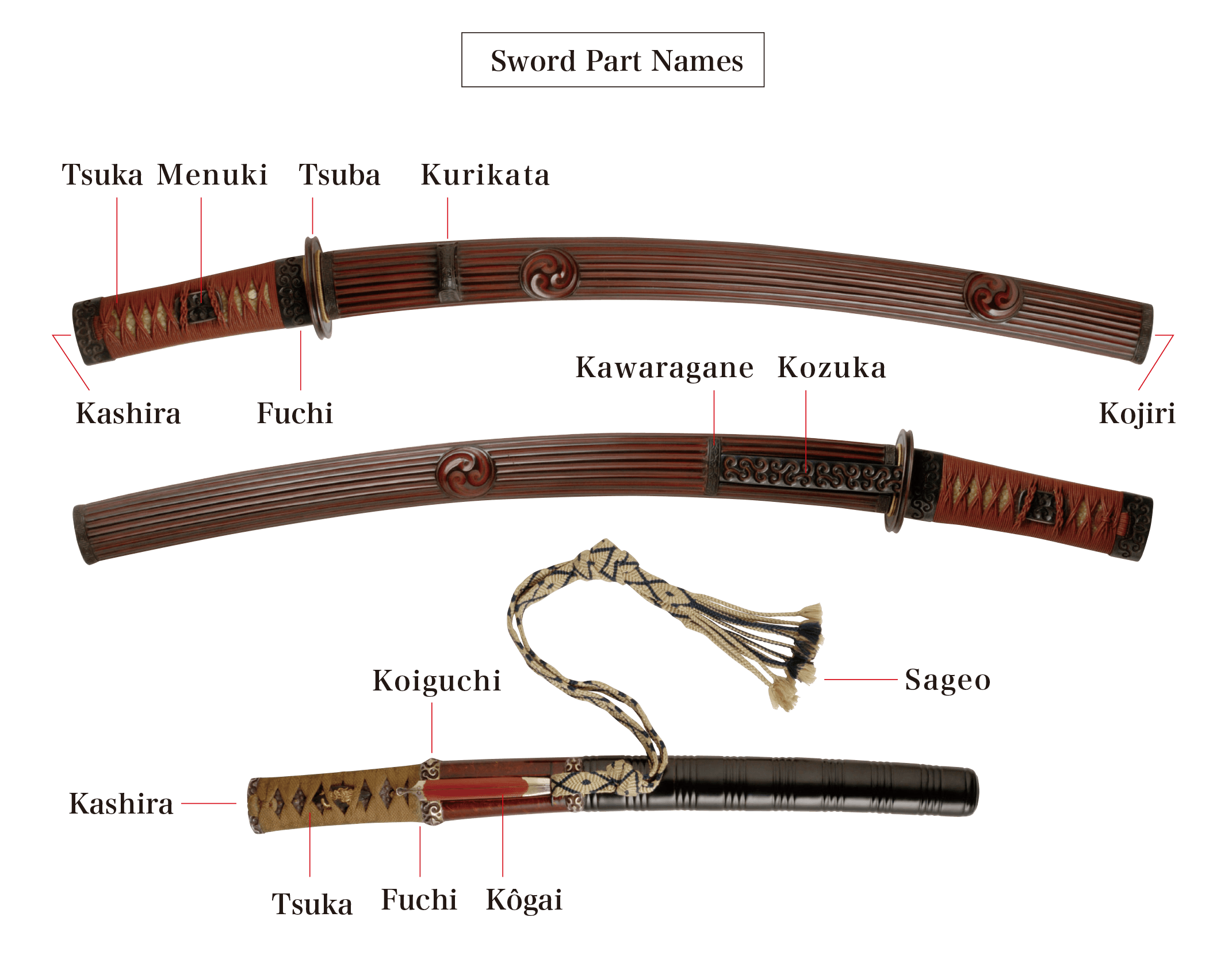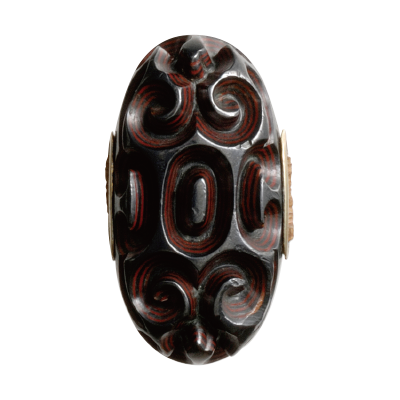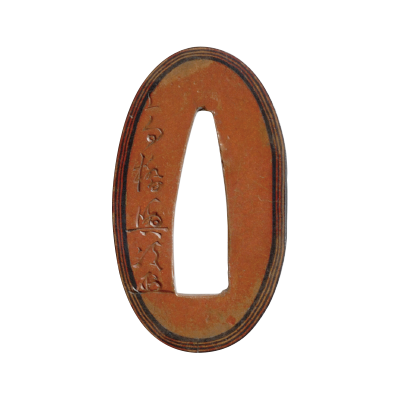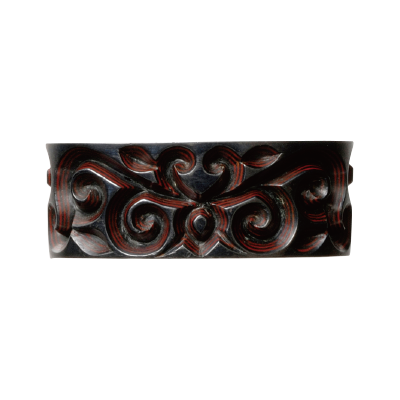Set of Tsuba, fuchi-kashira, kurikata and
kozuka with design of guri scrolls. Tsuba and
fuchi Signed: “Takahashi Okitsugu,”with kao.
Mid-to-late Edo period
【 Dimensions(mm)】- Tsuba:H 74.0 x W 70.2 x T 5.0 / 118.4g
- Fuchi:H 37.0 x W 21.4 x T 14.0 / 23.9g
- Kashira:H 33.7 x W 18.9 x T 9.6 / 12.6g
- Kozuka:H 32.9 x W 11.6 x T 17.1 / 11.8g
- 【 Date of production 】
- Mid-to-late Edo period
- A set of very beautiful sword fittings made by
Takahashi Okitsugu, which convey the true
charm of guribori. By carving a base made of
alternate layers of different colored metals, the
layering becomes visible in the carved portions
and takes the piece to another level of unique
artistry.
Guribori is the great specialty of the Takahashi
School. In particular, Okitsugu’s work
shows fine carving with plenty of shishioki
(substance) and a strong solid look. It can be
said that no one has ever surpassed Okitsugu
when it comes to guribori.
- <
- 6
- >
